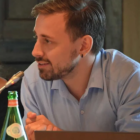For a related Perspective on the Buffalo shooting and insights gathered to potentially tackle right-wing content online, click here.
“The truth is my personal life and experiences are of no value. I am simply a White man seeking to protect and serve my community, my people, my culture, and my race.”
These words were written in a manifesto which was posted online before an 18-year-old gunman went to a grocery store in Buffalo, New York and opened fire on citizens in the parking lot, and then within the store. Ten people were killed in the incident on 14 May, which largely targeted Black shoppers in an act which is being investigated as racially motivated violent extremism. The alleged perpetrator, Payton Gendron (the Buffalo shooter), livestreamed the shooting, and posted the 180-page manifesto, which was shared widely online. This Perspective interrogates the manifesto produced by the Buffalo shooter.
Terrorism is a method of communication where the attack target, brutality, and timing are strategically designed to send a message. Self-proclaimed terrorists like the Buffalo shooter also use their manifestos to develop and deliver strategic communications around the attack and the motivations behind them. In an age where communication technologies dominate the production, consumption, and exchange of ideas, the instantaneous sharing of manifestos, now combined with livestreaming of the actual attacks, necessitates a thorough reflection and understanding of these shared elements of several recent attacks. Not only is the online content and material important to understand, but so is the racialised and ‘othering’ content within which the shooter used to justify the attack.
In this Perspective, we consider the Great Replacement Theory the shooter discusses, the use and inclusion of memes, and the racialised content expressed in his manifesto. By examining this content within the manifesto, it helps us better understand the broader context and specific factors that motivated this perpetrator.
The Great Replacement Theory
Throughout this manifesto, one of the most prevalent conspiracy theories expressed is the Great Replacement Theory. The Great Replacement Theory was propelled into mainstream conversations following Tarrant’s terrorist attack in Christchurch, New Zealand on 15 March 2019. Since then, when looking at Google Trends, “replacement theory” has maintained a steady presence in Google searches. Most searches emanate from the UK, Ireland, US, New Zealand, and Canada. Particularly relevant to the Buffalo shooters’ meme-filled manifesto, there have been repeated spikes in 'replacement theory' image searches and these spikes are increasingly frequent starting in late-2020. These trends are amplified on far-right websites and messaging platforms.
According to the Great Replacement theory, this process of ‘replacement’ is twofold. On the one hand, non-white people intentionally move to white-majority countries and reproduce with people in order to make them produce non-white babies. On the other hand, efforts are made to ‘weaken’ the existing white race by promoting sexual and gender diversity, which would discourage white people from settling into a family structure that is focused on producing children. This also includes making young white men addicted to porn, which makes them too preoccupied to reproduce at all.
The prevalence of this Great Replacement conspiracy theory sheds light on why, despite the target of the shooting being the Black community, the majority of the first 57-pages of the manifesto, which describes the perpetrators motivations, focuses on antisemitism, with the remaining pages describing the attack plans. When submitted to text analysis, his antisemitic rants throughout the manifesto are much more prevalent than his focus on the Black community.[1] The simultaneous belief in white supremacy and white victimisation necessitates the belief in a presence of an intelligent coordinator of the replacement effort, which is often framed as the Jewish community. According to the Great Replacement theory, and the Buffalo shooter, all above-described efforts are coordinated by the Jewish community, which makes them the ‘true’ enemy in his view.
The use of memes in the manifesto
One important aspect of this manifesto is the ubiquitous presence and use of memes. The Buffalo shooter is by no means an innovator in this respect, as we have seen used in far-right networks and attacks. For example, the Christchurch shooter decorated his weapon with memes and referenced the PewDiePie meme. Memes have also been connected to violent incel culture as Ashley Mattheis has highlighted. In fact, his manifesto blatantly features dozens of memes which have widely circulated on the Internet, referring to the “Great Replacement” and other antisemitic and racist content. This usage constitutes an interesting case of memetic replication (p. 54) across “lone actors” with no formal ties in order to create a shared transnational cultural and political space.
According to Shifman, Internet memes are “units of popular culture that are circulated, imitated, and transformed by Internet users, creating a shared cultural experience.” In this case, the replication of the same memes across different manifestos speaks of the shared cultural space that the online extreme right inhabits nowadays. These actors are not agglutinated by specific ideology, terrorist cell or even geographical location. Rather, the online extreme-right political milieu is composed of “a host of heterogeneous strands of diffuse political activities”, with divergent justificatory narratives" (p. 3). This ecosystem is inhabited by young, Internet-savvy, politically oriented individuals, but its underlying connection is cultural and extremely visual.
In this context, the exchange of Internet memes across different sites such as 4chan, 8chan, Reddit, Discord or Twitch, among others, allows ideologically divergent individuals to come together under one umbrella identity. This collective identity is only made possible by first, the technology behind modern communication, and second, by the identification of a common enemy. As discussed above, the manifesto is fixated with Jewish and Black people. This is not a surprise, as antisemitism and rejection of civil rights movements constitute a focal point of agreement for the otherwise heterogenous groups that compose the extreme right online. Having a common enemy, clearly seen in the over-reliance of the extreme right on the visualisation of stereotypes through Wojak faces or the “Happy Merchant” memes, facilitates a feeling of intergroup solidarity and strengthens inter-group cooperation.
Internet memes draw on a combination of humour, current pop aesthetics, and old tropes. This is important because it highlights how classic neo-Nazi and White Supremacist tenets and symbolism have been updated for and by the extreme right online sphere. The use of humour, importantly, allows for the whitewashing of violence and facilitates the dissemination of controversial political messages among less extreme or even mainstream sites, as their ideological charge is somewhat obscured by their flashy aesthetics and witty punchlines. In social media especially, Internet memes are deployed to promote extremist narratives under pop aesthetics, humour, and irony, lowering the barrier for participation. The fact that the Buffalo shooters’ manifesto was widely circulated online, as well as on traditional media, heralds a new wave of memetic reproduction and mainstreaming of his ideas among the unsuspecting general population, not to mention the extreme right online.
The racist elements of the manifesto
Inherent in both the conspiracy theories expressed in the manifesto, as well as in the memes included extensively within, are highly racist elements, which feature frequently in extreme right violence. The highly racialised content in this manifesto is based on classic racist theories – that people of sub-Saharan African heritage, in particular, have lower IQs and that there is a Jewish community of elites effectively running the world. The striking element of this attack is the simplistic but blatant racialisation. The location of the attack in Buffalo was also targeted conceivably because of its high rates of ethnic minority residential concentration. Here, the targeting of Black people is absolute, while the emphasis on how Jewish groups wield all the power, including in bringing Africans to America in the first instance, did not lead to their targeting, even as the racialisation more generally is clear in his manifesto.
The critical issue to emphasise here is the extent to which racism is so observable within. While it speaks to extreme right ideas of whiteness, the actions carried out by the Buffalo shooter suggest the furtherance of a generalisation of the discourse of white supremacism found in mainstream politics (for example, Donald Trump in the US, Britain’s Brexit, or Viktor Orbán’s Hungary). It is also particularly observable in media discourses where the likes of Tucker Carlson on Fox News or Nigel Farage both generate generalisable white supremacism that is not explicit about its true intentions. However, the implicit viewpoints within relate to the dismissal of diversity and the idea that ‘others’ are a risk to the ‘self’, whether at the level of the individual, nation, or wider global north where ideas of whiteness already have an existing hold. The targeting of visible, marginalised, excluded, and alienated members of society reflects a one-sided, exclusivity narrative that has been inculcated in the attacker through the mainstreaming of such narratives above. At the core of this racist ideology is The Great Replacement Theory.
The Buffalo shooters’ manifesto reflects a young white person who believes that their future has been compromised due to the mere presence of others. This perceived threat associated with the presence of non-white others has, in part, been facilitated by limited actions and regulation by tech platforms, but also due to insufficient critical thinking context in education, and multiple other factors. Other recent events such as the Black Lives Matter demonstrations in America (and the protests to this) are also part of this story. Racism continues to raise its ugly head – and this act of violent extremism speaks to this.
In contrast to other recent far-right manifestos discussed above, it is also noticeable in this manifesto that there is a comparative dearth of the anti-Muslim and anti-Islamic framing, or wider anti-immigrant and anti-minority sentiment that was so prominent in the Breivik (2011), Tarrant (2018), and Halle (2019) attacks. While Sadiq Khan, Mayor of London, and Tayyip Erdogan, President of Turkey, both get mentioned under the theme of “killing high-profile enemies”, general anti-Muslim or anti-Islamic rhetoric are minimal in this manifesto.
Notably, there is also virtually no mention of women, or feminism, beyond the initial discussion of birth rates. In general, the manifesto is not as concerned with the weakening of the white family structure component that makes up the Great Replacement Theory. In this category, Gendron only seems to be concerned with transgender people and porn addiction, which are both featured as problems in the memes that he has chosen to add. The Buffalo shooter mentions the LGBTQ community specifically to clarify that he has no problem with gay, lesbian and bisexual people, as long as they are ‘loyal’. As mentioned before, online communities are cultural and highly visual, which does not necessitate a thorough understanding of the concepts that are discussed.
Conclusion
An analysis of the manifesto highlights several important issues. Firstly, that the production and dissemination of manifestos appears increasingly common in far-right attacks, and have often been disseminated widely online, and covered widely in media. In the case of the Buffalo shooter, it also highlights how he drew off the manifesto of another perpetrator – the Christchurch shooter, suggesting some influence and overlap with other perpetrators. The shooter also stated that he was motivated largely by the Great Replacement Theory – a theory which has been utilised by other attackers and one which is also creeping into mainstream discourses. The attacker too was particularly, and even uniquely, active with his utilisation of memes in his manifesto, suggesting this “unit of popular culture” was particularly attractive to him. Finally, similar to many other recent far-right attacks, the racist elements that influenced the attack targets saw him target Black Americans, even while he also largely blames Jews for this “great replacement” in his manifesto.
These points raise important concerns to better understand and respond to each element uniquely. For tech companies who host such materials, there is the responsibility to ensure their platforms are not used to do so. There are also implications for media more generally in terms of how they cover and amplify such manifestos, and the themes within. The specific importance of education and the need for critical thinking to help better counter some of the prevalent narratives expressed in this and many other manifestos is also clear.
[1] Using a relevancy score scaled from 0-1 where higher scores correspond to greater relevance in the narrative, “Jews” and “gays” produced the highest scores, 0.997 and 0.477, respectively whereas “black man” and “black” scored of 0.17 and 0.159, respectively.
This publication represents the views of the author(s) solely. ICCT is an independent foundation, and takes no institutional positions on matters of policy unless clearly stated otherwise.
Photocredit: Feng Yu/Shutterstock












